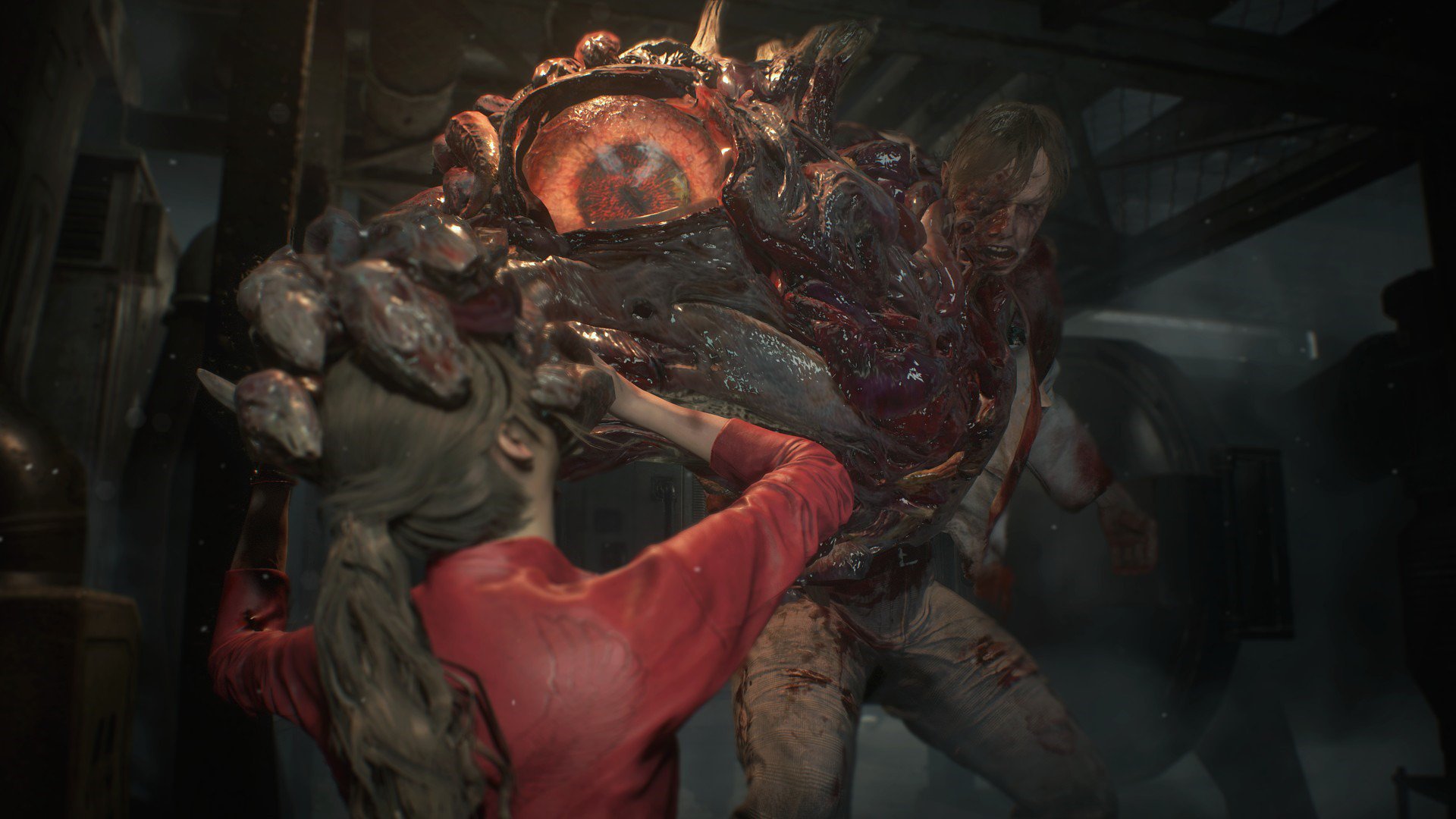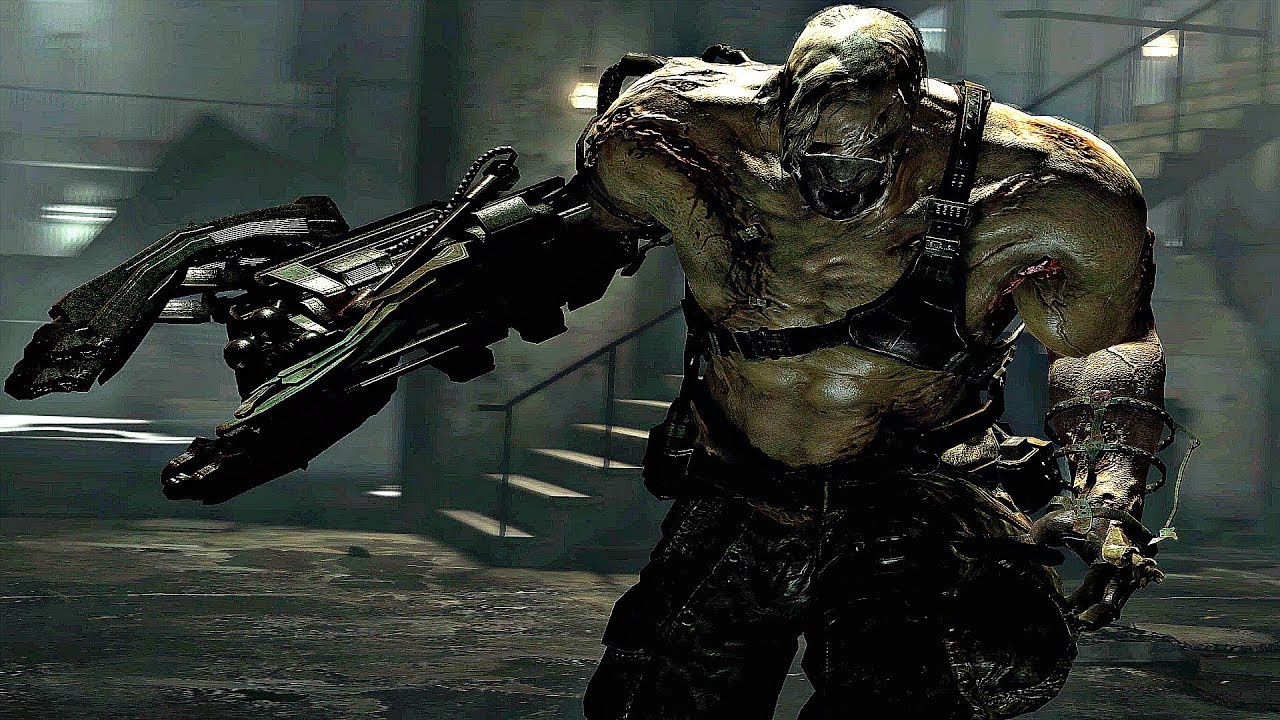
It may have started out as a series about zombies, but over the course of over two decades and many, many games, Resident Evil has expanded its horizons to expand. It’s now about so much more than just zombies. Zombies are just a tiny cog in the machine now, and the machine itself is all about bioweapons. That, of course, means that throughout the course of the series, there have been many viruses that have given birth to these bioweapons- so many, in fact, that you wouldn’t be blamed for losing track of a few of them.
With Resident Evil Village around the corner and promising completely new kinds of threats and monstrosities, here, we’ll be taking a look at the history and the origins of the many viruses the series has featured so far. In the spirit of being lean and concise, we’ll only be focusing on canon and mainline instalments, which includes all the numbered games, Zero, Code Veronica, Revelations, Revelations 2, The Umbrella Chronicles, and Darkside Chronicles.
PROGENITOR VIRUS
The one that started it all. In 1967, when Dr. Ozwell E. Spencer, Dr. James Marcus, and Dr. Edward Ashford discovered a flowered known as Garden of the Sun native to West Africa, they kicked off what would become a long and eventful series of events. Supposedly hundreds of millions of years old, the flower was said to be responsible for everything from superhuman strength to accelerated intellect, and the discovery of the flower led to the aforementioned trio establishing what would become known as Umbrella Corporation, with the flower itself leading to the creation, study, and experimentation of the Progenitor Virus. Out of those three, Spencer in particular was obsessed with the idea of creating a new and “better” breed of humans who would have the powers of immortality, which meant the flower was of particular interest to him. In the years and decades afterward, many of the viruses to be created by Umbrella and others in the Resident Evil universe would be made on the foundations laid down by the Progenitor Virus.
T-VIRUS
The very first virus that Umbrella Corporation started working on following the discovery of the Progenitor Virus was the Tyrant Virus, also referred to as the t-Virus. The name was coined by Dr. James Marcus, who was successfully able to create a new mutated strain of the Progenitor Virus in the late 1970s with unique properties. Rather than killing those it infected like the Progenitor Virus usually did, this new strain instead kept that alive and gave them enhanced strength, at the cost of severe brain damage. That brain damage would also lead to heightened aggression, a side affect of which was extreme hunger, usually to the point of even cannibalism. In laymen terms, this new strain of the virus turned the infected into zombies.
About a decade later, Umbrella Corporation expanded the scope of the t-Virus, wanting to create a new strain of the virus that would allow them to create actual, formidable bio-organic weapons that would not only have much greater physical capabilities, but also retain some of their mental faculties and intelligence. This led to the creation of an improved strain of the t-Virus known as Epsilon, which, in turn, led to the creation of the T-002, or the very first Tyrant. Later Tyrant models, including everyone’s favourite Tyrant Mr. X, were all based on the Epsilon strain of the t-Virus.
Another strain of the t-Virus was the t-Veronica Virus, which was created by the Ashford family, with Alexia Ashford merging the Progenitor virus with with a queen ant genome as well as plant genes. Highly volatile and experimental, under the right circumstances, the t-Veronica Virus, unlike the t-Virus, allowed its host to retain full intellectual capabilities. The virus was named after the former matriarch of the Ashford family, Veronica Ashford, whose DNA was also used during the project.
Yet another variant of the t-Virus was the t-Abyss Virus. Following Umbrella’s demise in the early 2000s, the t-Virus managed to find its way onto the black market. Morgan Landsdale, the corrupt head of the Federal Bioterrorism Commission (or the FBC) managed to get his hands on a t-Virus sample, and merged it with a virus endemic to the Kermadec Trench known as the Abyss Virus. The t-Abyss Virus had the ability to rapidly mutate its hosts, which often came in the form of a grey, slimy substance being secreted from their bodies on a near-constant basis, known as “Ooze”.
Finally, there was also the t-Phobos Virus, a strain of the t-Virus developed by Dr. Alex Wesker. Created with the intent to enable superhuman strength and abilities without the side effects that generally went along with these things, the t-Phobos Virus was engineered to only trigger mutations in its hosts when said hosts came under extreme stress- thus the name “t-Phobos”.
G-VIRUS
The early years of Umbrella Corporation weren’t all about the t-Virus. While the t-Virus, the Tyrant Project, and the Nemesis Project were all moving full speed ahead, so, too, was the development of the Golgotha Virus, also known as the G-Virus. It all started with Lisa Trevor, daughter of Spencer Mansion architect George Trevor. During the mid- to late-1960s, Lisa Trevor was abducted by Umbrella Corporation and used as a test subject for many of their BOW experiments. She was injected with the Progenitor Virus, and much to Umbrella’s surprise, she responded by developing superhuman strength. It was because of that reason that she became one of Umbrella’s most valuable lab rats in the coming years, and was routinely experimented on for nearly three decades.
In the late 1980s, as part of the Nemesis Project, Lisa was injected with the Nemesis Alpha parasite, and Lisa – who had mutated heavily over the course of years and years of experimentation – had developed an immune system that immediately attacked and destroyed the parasite. Much to the surprise of head Umbrella researcher Dr. William Birkin, on top of that, she also managed to recover some of her intelligence and show signs of physical recovery. When Birking finally managed to isolate the root cause for this unprecedented regeneration, he was surprised to find a newly mutated strain of the Progenitor Virus that was completely different from the t-Virus. This new strain was dubbed as the Golgotha Virus, and Birkin, under orders from Spencer, would spend the next decade studying and developing this new strain.
Unlike the t-Virus, the G-Virus was capable of a lot more than just turning the infected into zombies. While the t-Virus led to necrosis and decay, the G-Virus resulted not only in superhuman strength, but also regeneration and reviving dead cells. Mutations from the G-Virus were also far more drastic than those from the t-Virus, to the point where a completely mutated G-infected person was completely unrecognizable from their original human form. Owing to the virus’ extreme selectiveness when picking a host, the spread of G was far more contained, and only a few people so far have been able to become successful hosts. One of those, ironically, was William Birkin himself.
LAS PLAGAS
And now we arrive at Resident Evil 4 and its star of the show, the Las Plagas, a parasite which, unlike everything else that had come before it, did not originate from the Progenitor Virus. The parasitic anthropod known as the Plaga had existed in Spain for thousands of years. During the Renaissance Era, a Spanish nobleman known as Salazar was said to have used the parasite in rituals and sacrifices, and the parasite’s mind-control abilities were used to indoctrinate large amounts of people. Years later, the parasite was eventually sealed away in an ancient cavern complex beneath Salazar’s castle.
In the late 1990s, one Osmund Saddler became aware of the Plaga’s existence, and to fuel his own bioterrorism plans and the development of BOWs, Saddler created the cult known as the Los Illuminados. Salazar’s descendant, Ramon Salazar, was one of the the first to begin following the Los Illuminados, and Saddler would go on to implant the Plaga parasite in all the followers of the cult, intending for them to be mind-controlled puppets, and serve as an army of sorts that would keep out trespassers and protect his experiments and research. Some high-ranking members of Los Illuminados, such as Ramon Salazar and Saddler himself, were implanted with the Dominant species Plagas, which not only resulted in much more violent and formidable physical mutations, but also allowed hosts to resist the mind control that usually went hand-in-hand with a Plaga infection.
On top of mind control, a Plaga infection also resulted in enhanced physical strength and durability. Plaga parasites were discovered to communicate with each other through ultra-high frequency sound waves, with the Dominant species being able to use this method to communicate with and pass commands to the Recessive species of the parasite. Oh, and fun fact- the Las Plagas served as the inspiration for Umbrella Corporation’s Nemesis Project, which is how Nemesis in the Resident Evil 3 remake is able to infect and control other zombies.
UROBOROS
Over the course of the first several games of the Resident Evil series, Albert Wesker managed to get his hands on samples of several different viruses, from the t-Virus to the G-Virus to the t-Veronica Virus to the Dominant species Plagas, and using the knowledge he gained from the study and experimentation of all of those, in collaboration with African pharmaceutical company Tricell, he would come up with something that was much more potent and deadly. By the mid- to late-2000s, Wesker had arrived on the conclusion that humanity was a problem that needed to be eradicated, and using the Progenitor Virus (or a form of it, in any case), he intended to wipe out all but a chosen few with specific genetic characteristics.
And thus, the Uroboros Virus was born. Using the t-Virus antibodies he found within Jill Valentine (who had been infected by Nemesis all the way back in 1998 during the Raccoon City incident), Wesker was able to formulate a virus that would do exactly what he intended- kill everyone on the planet with the exception of a chosen few, who would successfully react to the virus not by dying, but by mutating and developing superhuman physical and mental capabilities. The chosen few who would be able to react to the virus as Wesker intended would develop increased strength, intelligence, speed, regenerative abilities, and more, all while being able to retain their physical human form without any deadly mutations or side effects.
Wesker himself was infected with Uroboros, and developed all of these abilities. Of course, when Wesker was shot in the face with a rocket launcher by Chris Redfield and Sheva Alomar and left to die in an exploding volcano, his plan for complete global saturation was completely and utterly foiled. Variants of the Uroboros Virus still exist within the Resident Evil universe, and would be used again later on by Alex Wesker in Resident Evil Revelations 2.
C-VIRUS
Here’s another example of others picking up the pieces of Umbrella’s research long after the corporation was dissolved. The Family was a secret fraternity with enormous economic and political influence led by American civil servant Derek C. Simmons (who would later go on to become the National Security Advisor). The development of the C-Virus (or the Chrysalid Virus) began on orders from Simmons in the early 2000s, and though it used the Progenitor Virus and t-Virus as its basis, there were other viruses involved as well. Spliced with genes extracted from the t-Veronica Virus and the G-Virus, lead researcher Dr. Carla Radames was able to successfully formulate the C-Virus about a decade later.
And what exactly are the effects of the C-Virus? Several, actually, including the good old “enhanced physical capabilities”. Where intelligence is concerned, hosts are able to regain a lot more of their mental faculties compared to hosts of, say, the t-Virus, with many even being able to follow orders. Interestingly enough, owing to the C-Virus including bits and pieces of the G-Virus as well, it also has regenerative abilities, which means it can even infect corpses and cause them to resuscitate, often even years after death. Finally, the C-Virus can also result in extreme physical mutations, including gigantic appendages popping out of the body (usually in the form of a huge arm) that can be used as weapons.
The end of Resident Evil 6 saw a vaccine being developed for the C-Virus, which means this particular virus is no longer around in the RE universe (that we know of).
THE MOLD
Here it is- the newest and most recent virus in the Resident Evil universe. Development on the Mold began in the early 2000s, with criminal syndicate The Connections collaborating with Albert Wesker’s paramilitary group, H.C.F. The Mold was developed as a bioweapon that would eliminate the massive costs and negative publicity that often went hand-in-hand with the spread of most BOWs. Based on a fungal superorganism, the Mold could give its host terrifying capabilities, including complete and total mind control. The Connections intended to use this bioweapons primarily for infiltration, for the purposes of, say, forcefully turning enemy combatants into allies, or dismantling organizations from the inside through these means. So far, only one host has managed to successfully, well, host this virus and display those abilities- a genetically engineered young girl known as Eveline.
Not only was Eveline able to control people’s minds, make them hallucinate, and follow orders, she also had the ability to vomit large quantities of the black and gooey mold to create huge, lumbering monstrosities with formidable physical strength, durability, and regenerative abilities known as the Molded. Though Eveline herself is dead by the time Resident Evil 7 comes to an end and though there are known countermeasures that can be used to counteract the Mold, the bioweapons is still very much a threat in the RE universe by the time the game comes to an end.
WHAT’S NEXT?
And now, here we are, with Resident Evil Village right around the corner. It’d be safe to assume that the upcoming survival horror title will introduce yet another completely new virus to the series canon- but then again, there are also several hints that suggest that maybe it’ll be a culmination of a lot of what we’ve seen in the series so far. Capcom have already showed glimpses of several creatures and bioweapons that will be appearing in Resident Evil Village, and a lot of these seem to call back to others from the series’ history.
Lady Dimitrescu, for instance, gives off serious Tyrant vibes, owing to her intimidating physical form, and her long retractable claws. Lady Dimitrescu’s daughters can transform into swarms of bugs, which harkens back to the abilities that Marguerite Baker had in Resident Evil 7. Then there’s that giant wielding a massive sledgehammer, which surely has some shades of El Gigante from Resident Evil 4. And, of course, RE Village is also going to have zombies, albeit ones that are seemingly more intelligent, seeing as they can wield and use weapons such as swords- so the t-Virus is obviously still around in some form or another. Finally, there’s the fact that Chris Redfield has kidnapped Ethan and Mia’s daughter, which could possibly have something to do with the fact that Mia was at one point infected with the Mold, and may have passed that down to her daughter.
Then again, seeing as we’re seeing everything from vampires to werewolves here, there’s a pretty good chance that all of this is being caused by something completely new and unknown. We’ll know soon enough though- Resident Evil Village is not far away, and launches on May 7.























